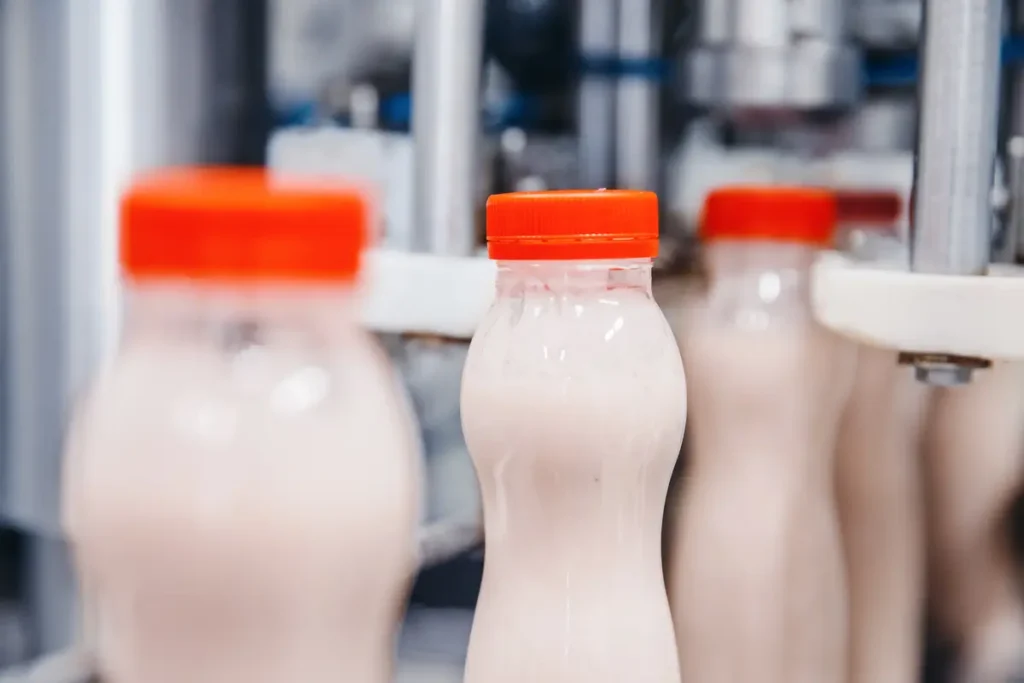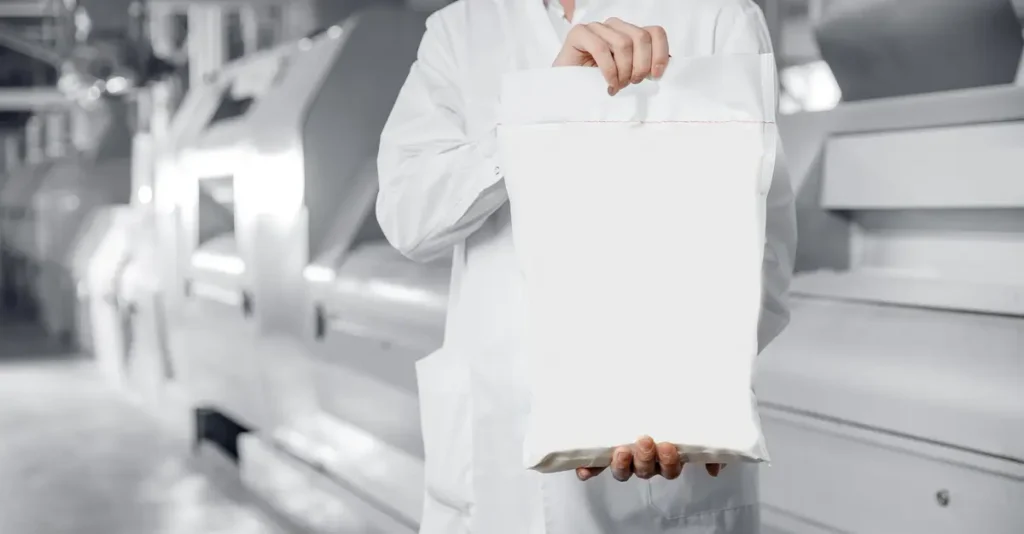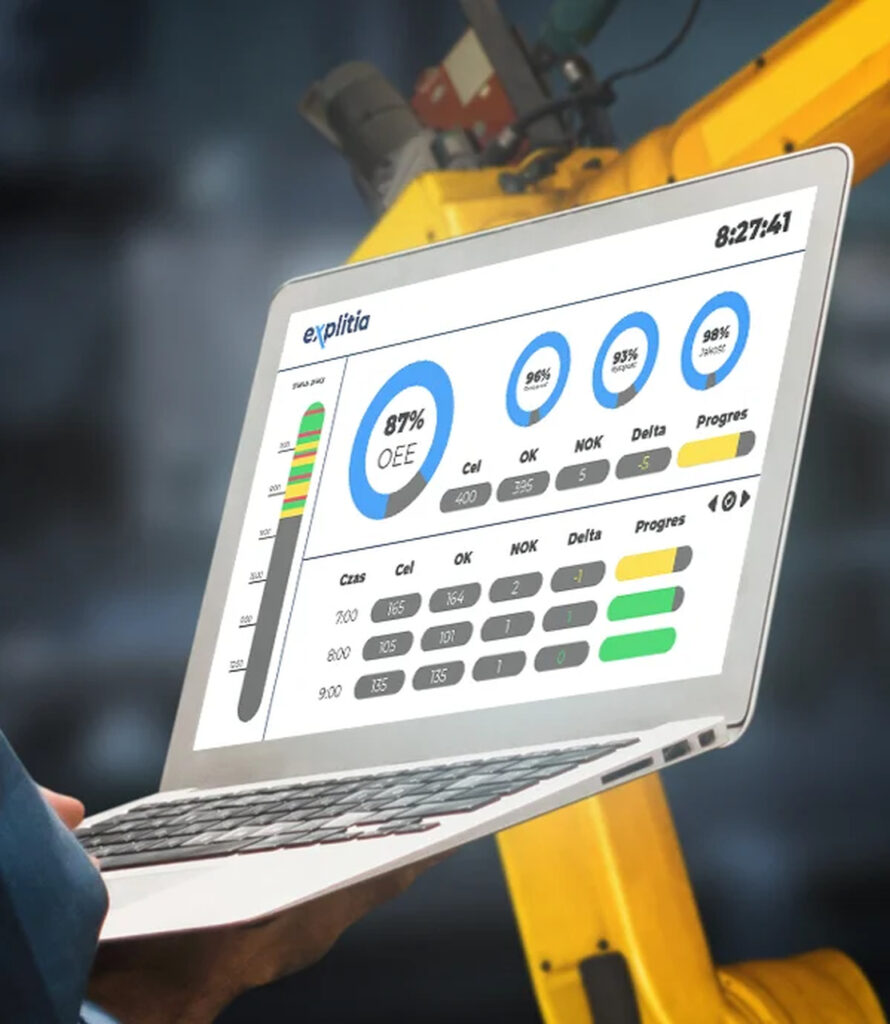What is OEE and why is it worth measuring?
Overall Equipment Effectiveness (OEE) is a key performance indicator used to measure how effectively machines and equipment are utilized in a production process. It provides a comprehensive assessment of production line performance by analyzing three critical parameters: availability, performance, and quality. Why do so many production plants around the world choose to implement this methodology? The answer is simple – OEE is a tool that helps identify losses and systematically optimize processes.
The three pillars of OEE
As mentioned, OEE consists of three main components. To fully understand the potential of this metric, let’s take a closer look at these elements.
1. Availability
Availability measures the actual operating time of a machine compared to the planned production time. It accounts for both planned and unplanned downtime, such as breakdowns, maintenance, or changeovers. In the food industry, availability is particularly crucial due to the need for regular cleaning and disinfection, which significantly affects effective operating time.
2. Performance
Performance assesses how efficiently a machine operates compared to its nominal, manufacturer-declared capacity. Devices often fail to reach their full potential for various reasons – auxiliary equipment mismatches, raw material supply issues, or incorrect parameter settings.
3. Quality
The final but equally important factor is quality, which defines the ratio of conforming products to the total number of produced units. In the food industry, this metric is especially critical due to its direct impact on consumer safety and the financial risks associated with defective products.

OEE in the dairy industry – practical applications
The dairy sector is a prime example of where effective process management using OEE can deliver tangible benefits. Here’s how OEE is applied at various stages of production:
Raw material reception
The process begins with the reception of milk. By measuring OEE, it’s possible to optimize tanker unloading times, reduce waiting periods, and increase intake capacity. With proper data analysis, deliveries can be scheduled to maximize the use of available infrastructure.
Pasteurization and thermal processing
Pasteurization lines are critical in dairy production. Monitoring their effectiveness allows for:
- optimizing working time between cleaning cycles;
- reducing unplanned downtime caused by breakdowns;
- improving product quality parameters.
Notably, modern dairy plants use double pasteurization systems, increasing availability and eliminating the risk of downtime if one system fails.
Product packaging
The packaging area for dairy products (yogurts, cheeses, UHT milk) is where OEE can deliver significant gains. Accurate monitoring of packaging line performance allows:
- identifying causes of frequent stops;
- optimizing changeover time between products;
- improving packaging quality and label printing accuracy.
OEE in the dairy industry measurement allows for:
- identifying delays due to cleaning and sterilization of tanks;
- optimizing pasteurization system planning;
- comparing the performance of different production lines;
- controlling label print quality and carton sealing.
OEE systems are especially useful when one line is overloaded while other machines remain underutilized due to installation limitations. Data analysis enables optimal production planning and investment decisions.

OEE in the milling industry – industry-specific characteristics
Though operating on a completely different raw material, the milling industry can also benefit from implementing OEE measurement systems – from grain reception to flour packaging.
Grain reception and storage
During the harvest season, when the inflow of grain increases, effective intake management is crucial. OEE allows measurement of the actual throughput of intake hoppers and transport routes, helping identify bottlenecks and eliminate them.
Grain cleaning
At the grain cleaning stage before milling, quality becomes the key OEE parameter. The efficiency of removing impurities directly impacts the final product – flour. Measurement enables optimization of cleaning and sorting equipment.
Milling and flour packaging
The mill itself is the heart of the plant. Monitoring its performance, availability, and product quality helps:
- maintain high flour quality while optimally using raw materials;
- minimize downtime due to equipment failures;
- efficiently plan maintenance and inspections.
How to implement OEE in food production?
OEE Implementation as a foundation of Industry 4.0
Introducing OEE is the first step toward adopting Industry 4.0 principles. It’s a relatively easy digitalization step that allows for a smoother path to further innovation. OEE lays the groundwork for systems like traceability, which enable even more precise production and quality management.
Contact us
Do you want to move your production plant to level 4.0? Are you interested in modern solutions for industry in the field of automation and digitisation? Be sure to let us know!
5 Steps to implement OEE in your company
OEE implementation is not complicated but requires a systematic approach:
- Define parameters – determine what to measure and set standards for specific processes.
- Data collection – implement automated data acquisition or establish manual reporting procedures.
- Analysis and interpretation – regularly review collected data to identify problems.
- Implement improvements – introduce corrective and optimization actions.
- Monitor results – continuously track the impact of changes.
Benefits of automating OEE
Traditional OEE calculations are time-consuming and prone to human error. Automation saves time, improves measurement accuracy, and provides real-time data access. This enhances visibility of current production conditions and accelerates decision-making.

OEE as part of a continuous improvement culture
OEE should not be an end in itself but part of a broader continuous improvement strategy. It supports well-known methodologies like Lean Manufacturing and TPM (Total Productive Maintenance). With regular measurement and data analysis, production teams can:
- identify and eliminate losses;
- standardize processes and procedures;
- build a culture of accountability for performance and quality;
- optimize equipment maintenance costs.
Predictive OEE analysis – the next step
Predictive OEE analysis is an advanced approach that uses historical data and analytical techniques to forecast future machine performance. It not only tracks current efficiency but also predicts potential issues before they affect the OEE score.
This technique uses large data sets and evaluation algorithms to effectively identify areas for improvement. These tools support better maintenance management and repair planning, resulting in optimized production processes. Early identification of potential failures helps minimize downtime and maximize equipment availability.
OEE is much more than a metric – it is a comprehensive tool supporting production management in food processing plants. When properly implemented and used, it can significantly increase a company’s competitiveness by reducing costs, increasing efficiency, and improving product quality.
Systematic measurement and analysis of OEE should be standard in every modern production facility – whether in the dairy, milling, or other food industry sectors.
Implementing OEE makes production more predictable, controlled, and flexible. Moreover, it forms the foundation for further automation and digitalization in line with Industry 4.0 principles.


